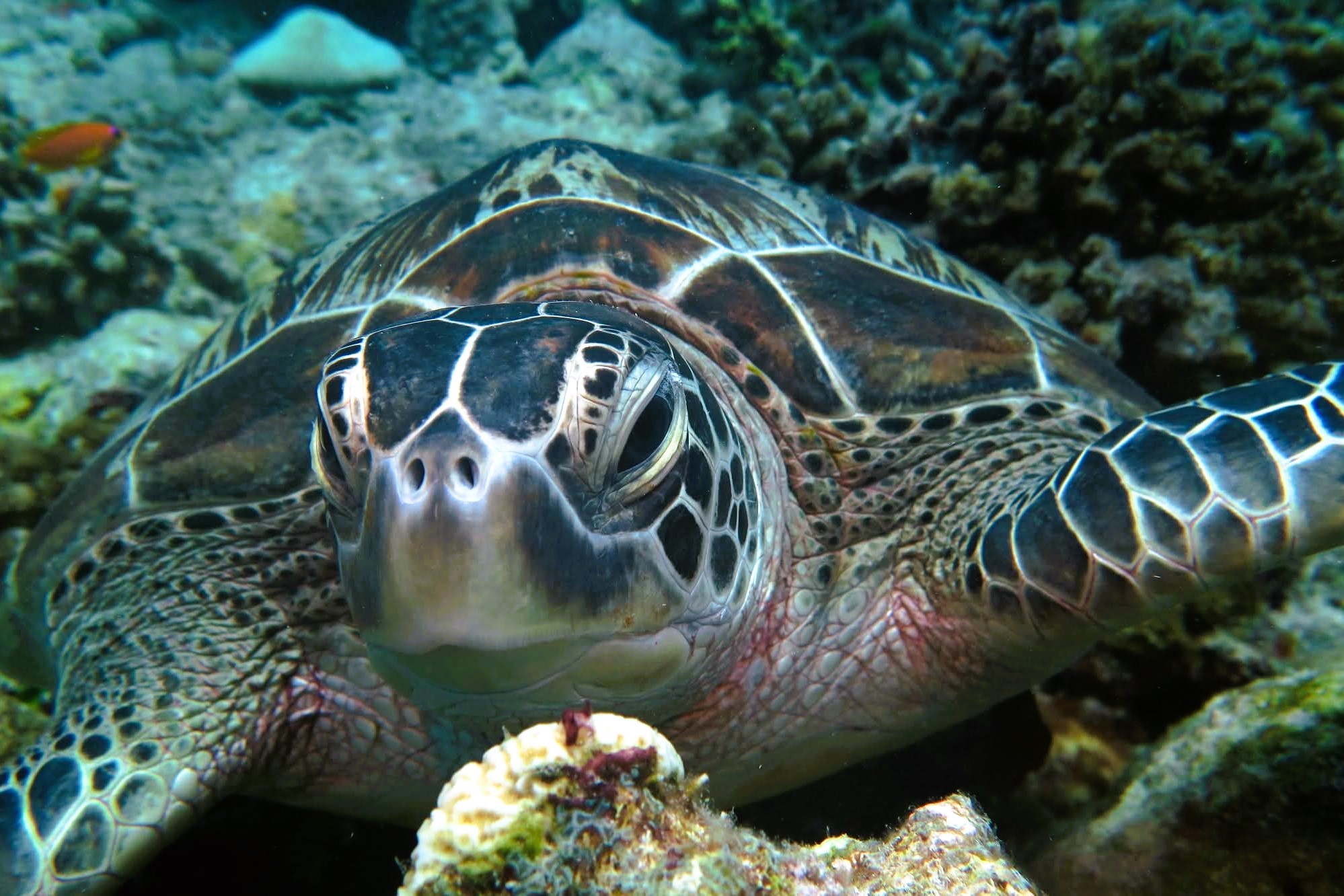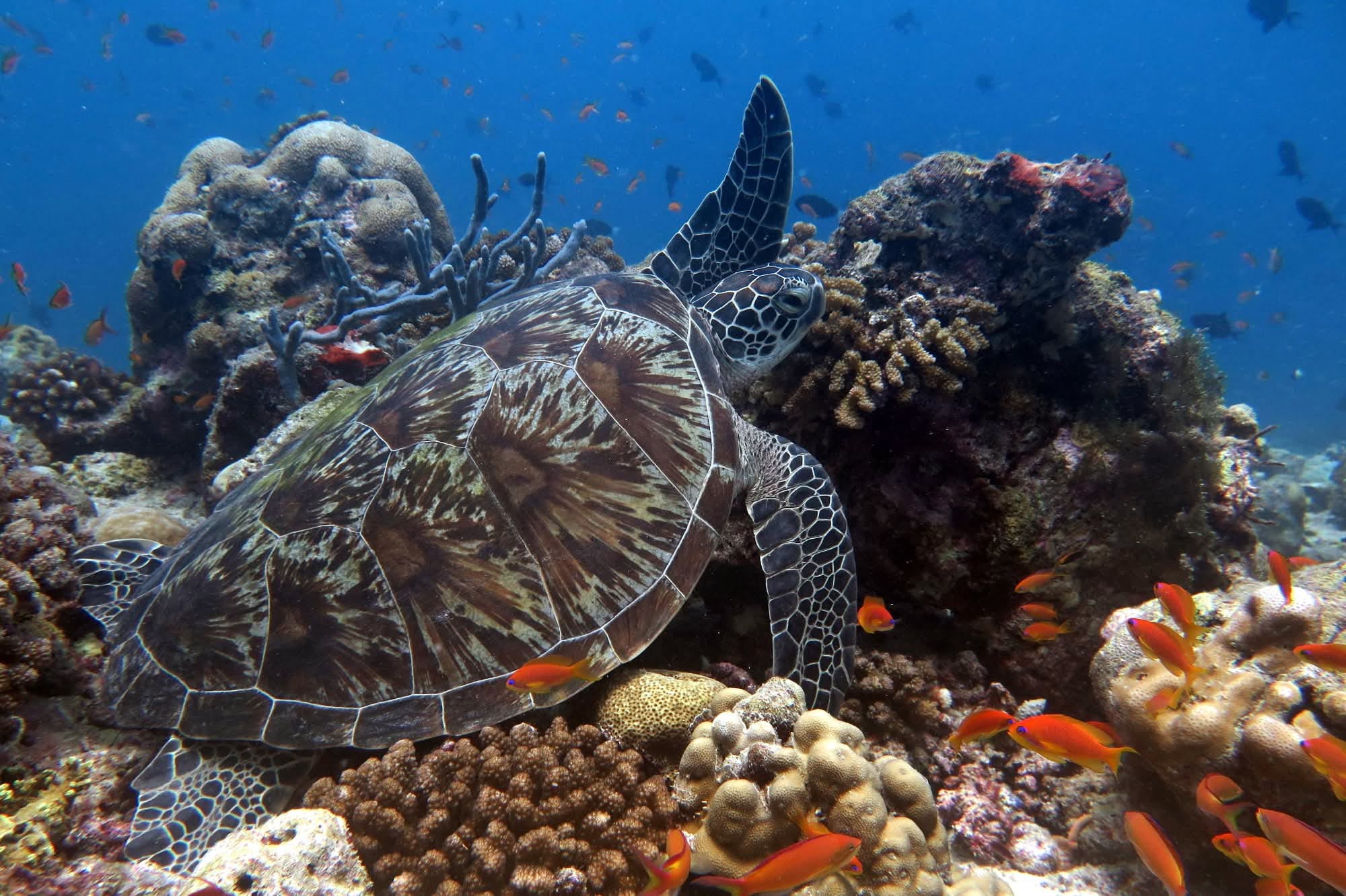Chelonia mydas



Reptilia → Testudines → Cryptodira → Cheloniidae → Chelonia mydas
Tartüga vërde
Chelonia mydas , known as the green sea turtle, is distinguished by its oval, sturdy, and slightly flattened carapace, with coloration ranging from brown to olive green, often adorned with lighter stripes or spots that make each individual unique. The name "green" does not refer to the carapace, but to the greenish color of the underlying body fat, resulting from the peculiar plant-based diet of adults.
Adult individuals reach remarkable sizes: the carapace can measure from 31 to 47 in (80–120 cm) in length, while weight generally ranges from 220 to 440 lbs (100–200 kg). At birth, young individuals measure about 2 in (5 cm) and have a dark dorsal coloration and a light ventral side, an adaptation useful for camouflage in the early years of life.
Sexual dimorphism is evident: adult males are recognized by their longer and thicker tail and developed front claws—features absent or less pronounced in females, which are generally slightly larger.
In the Ligurian Sea, the green sea turtle is considered a rare and localized presence. Sightings, documented almost exclusively in Western Liguria, mainly concern young or subadult individuals in the pelagic phase, occasionally observed between June and October, when surface waters reach higher temperatures. The species does not reproduce in our waters: recorded individuals likely originate from eastern Mediterranean populations, where limited nesting sites exist.
Chelonia mydas primarily frequents coastal areas rich in marine vegetation, such as Posidonia oceanica meadows, which are essential environments for adult herbivores to survive and grow. There are also sightings near rocky seabeds and algae-rich areas, while young individuals are more common in open pelagic waters. This species only occasionally ventures into deeper waters.
In the Ligurian Sea, the presence of the green sea turtle is closely tied to the summer–autumn period. Unlike other sea turtles, adult Chelonia mydas are strictly herbivorous and show remarkable fidelity to selected feeding areas, spending long periods in Posidonia meadows to meet their nutritional needs.
There are no known nesting sites along the western Italian coast: reports concern only migratory or growing individuals.
The diet of the green sea turtle changes with age:
In Western Liguria, Chelonia mydas mainly feeds in Posidonia meadows, ecosystems of great ecological importance that are unfortunately increasingly threatened by environmental degradation.
The survival of the green sea turtle in Ligurian waters is threatened by various human-related factors:
Protecting this species also involves monitoring populations and reducing major threats.
Chelonia mydas is the only predominantly herbivorous sea turtle species in adulthood, a trait that sets it apart from all other sympatric species. It can remain underwater for up to 4–5 hours, especially when resting on the seabed. It shows strong fidelity to feeding sites, returning to the same foraging areas for years. The common name "green sea turtle" curiously derives from the green color of the subcutaneous fat, not from the carapace.
In Western Liguria, sightings of Chelonia mydas are subject to constant monitoring thanks to specific conservation projects and the contribution of the Aquarium of Genoa, which coordinates the rescue and rehabilitation of struggling individuals and the collection of essential scientific data.